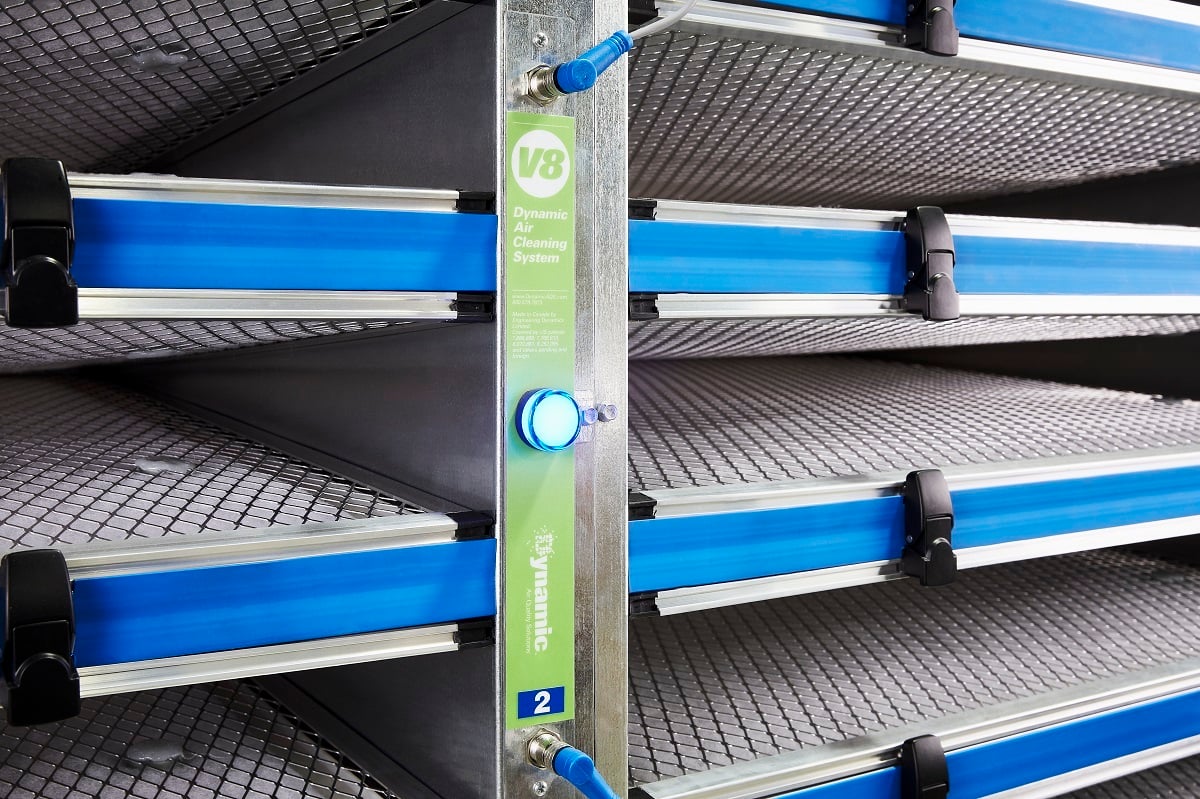As the focus on indoor air quality (IAQ) intensifies, HVAC professionals are continuously exploring innovative approaches to ventilation. One such approach is the Indoor Air Quality Procedure (IAQP), a performance-based method outlined in ASHRAE 62.1 that allows for significant reductions in outdoor air (ODA) while maintaining excellent air quality. This article explores how IAQP, combined with advanced filtration technologies, presents a sustainable and cost-effective alternative to traditional ventilation methods.
Understanding Ventilation and IAQP
ASHRAE 62.1 defines ventilation as the process of supplying and removing air from indoor spaces to achieve acceptable indoor air quality. Traditionally, the Ventilation Rate Procedure (VRP) has been the dominant method for determining required outdoor air intake rates. However, IAQP offers a more flexible alternative, leveraging gas-phase air cleaning to reduce ODA while effectively controlling contaminants.
Key Differences Between VRP and IAQP
|
Feature |
Ventilation Rate Procedure (VRP) |
Indoor Air Quality Procedure (IAQP) |
|
Approach |
Prescriptive |
Performance-based |
|
ODA Requirement |
Fixed, predefined rates |
Reduced through air cleaning |
|
Implementation |
Easier but less flexible |
Requires air quality testing |
|
Energy Use |
Higher due to increased ODA |
Lower through optimized filtration |
By utilizing IAQP, buildings can achieve a 60-70% reduction in ODA, leading to improved energy efficiency and lower operational costs.
The Role of Filtration Technology
To successfully implement IAQP, effective filtration is crucial. Two primary filtration strategies must be considered: particulate filtration (PM 2.5) and gas-phase filtration for airborne contaminants.
PM 2.5 Filtration
Fine particulate matter (PM 2.5) poses significant health risks as it can penetrate deep into the respiratory system. ASHRAE 62.1 recommends:
- MERV 8 filters (20% efficiency) for basic filtration
- MERV 11 filters (65% efficiency) where ODA limits exceed PM 2.5
- MERV 14+ filters (90%+ efficiency) for improved air quality
Dynamic V8 filters, a high-performance solution, offer 99% efficiency, minimal pressure drop, and extended filter lifespan of up to five years, significantly reducing maintenance costs.

Gas-Phase Filtration
Gas-phase filtration removes harmful airborne chemicals, including volatile organic compounds (VOCs) and ozone. The Dynamic EDGE gas-phase filtration system, tested under ASHRAE Standard 145.2, provides high removal efficiencies and customizable media blends to target specific pollutants such as:
- Acetaldehyde
- Benzene
- Formaldehyde
- Carbon monoxide
By integrating gas-phase filtration, IAQP can maintain IAQ standards with less reliance on outdoor air, resulting in substantial energy savings.

Case Study: VRP vs. IAQP in a Classroom Setting
A comparison of ventilation strategies in a 30,000 sq. ft. classroom illustrates the benefits of IAQP:
|
Parameter |
VRP |
IAQP |
|
Total ODA |
11,100 CFM |
3,750 CFM |
|
ODA Reduction |
- |
66% |
|
Energy Use |
Higher |
Lower |
|
Air Cleaning |
Minimal |
Enhanced filtration |
This study underscores IAQP’s potential to optimize air quality while significantly cutting energy consumption and HVAC loads.
Integration with Heat Pump Technology
The growing adoption of air-source heat pumps (ASHPs) in HVAC systems further enhances energy efficiency. However, certain challenges must be addressed:
- Minimum coil temperatures: ASHPs require a minimum entering air temperature of 45°F.
- Make-up air systems: Recirculating air extends the operating range of heat pumps.
- Retrofitting considerations: Increased ODA requirements may necessitate upgrades to supporting systems (e.g., hot water to glycol conversions).
By coupling IAQP with heat pump technology, HVAC professionals can design systems that optimize both air quality and energy efficiency.
Conclusion
Integrating IAQP with advanced filtration technologies represents a forward-thinking approach to sustainable HVAC design. By reducing ODA requirements while maintaining superior IAQ through high-efficiency particulate and gas-phase filtration, IAQP provides a cost-effective, energy-saving alternative to traditional VRP-based ventilation. When combined with heat pump technology, this approach further enhances building performance, occupant comfort, and environmental sustainability.
As HVAC standards continue to evolve, adopting performance-based ventilation strategies will be crucial in achieving energy efficiency goals while ensuring healthier indoor environments.

